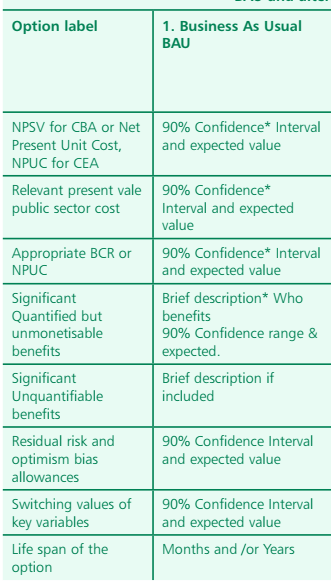“What can I do if I only have non-monetisable (or very little monetisable) and maybe very little even quantifiable: is it still “CBA” green book??”
There are always really good questions that come up on my VfM training courses. I have decided to record some of my responses to them as blog posts so that anyone interested can benefit from the insightful questions and (hopefully) useful responses.
If you are interested in my training please look at the core course details here and the module information here. Booking links are also on the website.
The training is delivered using an online hybrid model of on-demand videos with a live session for Q&A and deepening the knowledge. There is a core course introducing VfM and three modules on VfM and evaluation, VfM under complexity and one on cost-benefit analysis and benefit:cost ratios.
This question is one that comes up often in various forms – you have little hard evidence and little of that, if anything, that can be properly quantified. You have nothing that you can monetise to create your VfM assessment.
So what does all the Green Book guidance bring in that situation and can we still do something that is Green Book compliant?
(For those who aren’t familiar with it the Green Book is the UK Government guidance on policy appraisal and cost-benefit analysis (so a lot about using it in, for example, business cases) … it’s also by extension used in VfM assessment and works alongside the evaluation guidance)
Anyway… with this poor evidence what do we say if someone is asking us for a formal – and Green Book compliant – analysis?
My answer, whatever your final approach, is to still use the Green Book “spirit”.
Option 1 is to advocate for a broader 3E (or 4E) approach using quantitative data (formalised if you need to) link it to your cost data in a clear way and pull in the little quantitative data that you have. You are still doing a ‘cost and benefits analysis”. The Green Book is not nearly as limiting as people often think.
The other option is if you would really like and need (or can’t convince anyone else not to demand) a more formal approach. I would sum up this option up as a thorough, formal and complete walk through each of the quantitative metrics and the qualitative wrap around that is demanded by the Green Book – but with a lot of gaps that are explained well.
That’s really the key to the formal process when you don’t have the data: clearly explaining where you don’t have evidence and why… even if that means a lot of blank spaces and explanations – and then backfilling to the extent possible with qualitative insight
If you do that you are a) still trying your best to be Green Book compliant and b) at least explaining clearly why you don’t have things and explaining, in the right place and in the right way, why what you do have tells a story.
And, your best qualitative analysis tells that story.
This is the Green Book Green Book Appraisal summary table ( Section 7.4 and Figure 10)

You can see the sections on quantified but unmonetisable benefits and unquantifiable benefits. And you can still have your best go at costs. And you can present the life span of your intervention.
You are going to have a large set of footnotes. I really do think that it is a good, complete and honest way to work. Hopefully whoever you are presenting it to will accept the spirit in which it is given and not think you are being sarcastic!!
Don’t forget to sign up for my VfM training if you haven’t been on it already – and please tell your friends and colleagues if you think they will be interested.
Thanks – and please get in touch if you would like to talk about anything around VfM, your strategy and evidence and how I may be able to support you in your work.
